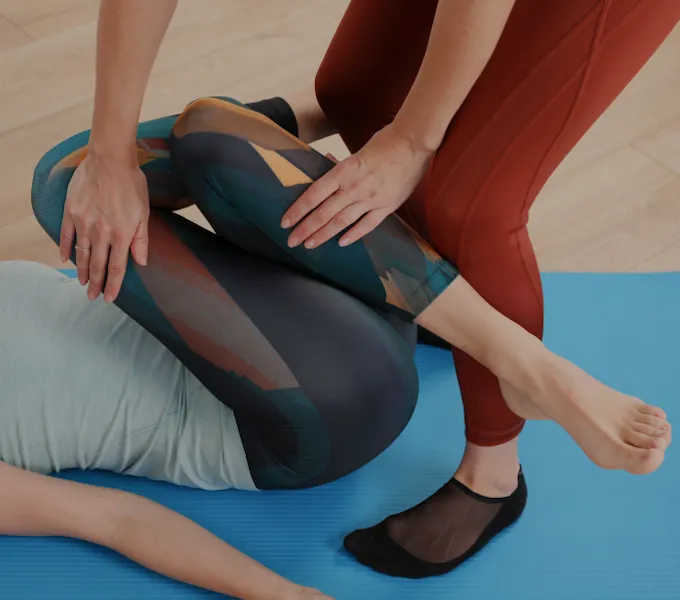
Stress Urinary Incontinence and Diastasis Recti
Thanks to our friends over at Mahmee and Leah Keller, Creator of the EMbody Program™ for sharing their expertise! You can read the original post on the Mahmee blog and be sure to check out their app that provides personalized, ongoing postpartum care to new moms and infants.
Leaking urine when you jump, sneeze or cough (stress urinary incontinence, or SUI) and abdominal separation (diastasis recti, or DR) often present concurrently, and these conditions impact a majority of childbearing women.
During pregnancy, the growing uterus increases intra-abdominal pressure, bulging the abdominal wall forward and the pelvic floor downward. This internal pressure lengthens and weakens core muscles while stretching and thinning the connective tissue. Relaxin and other pregnancy hormones heighten joint laxity, which makes over-stretching of ligaments, tendons, and fascia even more likely.
It is not uncommon for SUI and DR to persist for months and even years after childbirth. Sometimes these stress urinary incontinence symptoms are minor, and sometimes they are the result of a larger issue, like diastasis recti.
Sadly, many women accept these symptoms as their “new normal” of body after baby, but both stress urinary incontinence and abdominal separation can be prevented, treated and often fully resolved with therapeutic core exercises. Loss of core integrity and bladder control negatively impacts the quality of life, contributing to social isolation, decreasing self-esteem and body confidence, and significantly inhibiting their physical activity. As you can imagine, these challenges can exacerbate postpartum depression and perinatal mood and anxiety disorders.
As a prenatal and postnatal fitness coach, I work closely with women as they struggle with these issues. I discovered over a decade ago that as I help women strengthen their deep core to address DR, they experience spontaneous resolution of another symptom they sometimes don’t mention until it has resolved: urinary incontinence. What a terrific bonus!
While strengthening and firming their core muscles, clients also improve continence. With their newfound freedom, they can leave the house without wearing a pantiliner to discreetly catch dribbles, or jump with their kids in a bouncy castle without the fear of leaking. They can even go for a run again without pelvic or bladder pressure!
Why do the core exercises that resolve diastasis recti spontaneously eliminate stress urinary incontinence?
Healthy activation of the transverse abdominis, the primary muscle responsible for resolving diastasis recti, elicits a spontaneous co-contraction of several core muscles, including the diaphragm, the rectus abdominis, the lumbar multifidus, and the pelvic floor.
When I coach clients to exhale as they engage the deep core muscles in an upward lift toward the spine, they benefit from spontaneous recruitment of the sphincter muscle that controls the urethra. We also work on fully relaxing the deep core muscles between reps, learning how to consciously release to prevent hypertonicity, or chronic over-tightening, of the pelvic floor. Although less intuitively obvious, an overly tight pelvic floor can be as problematic as lack of muscle tone.
The practical result of this approach to core training: women regain confident control over urination. They stop leaking.



